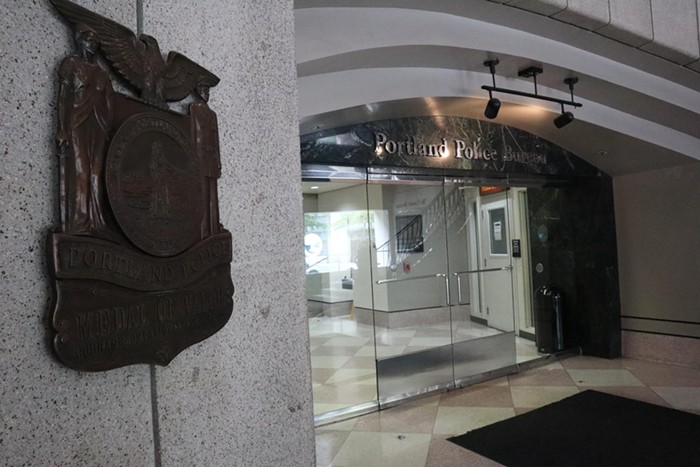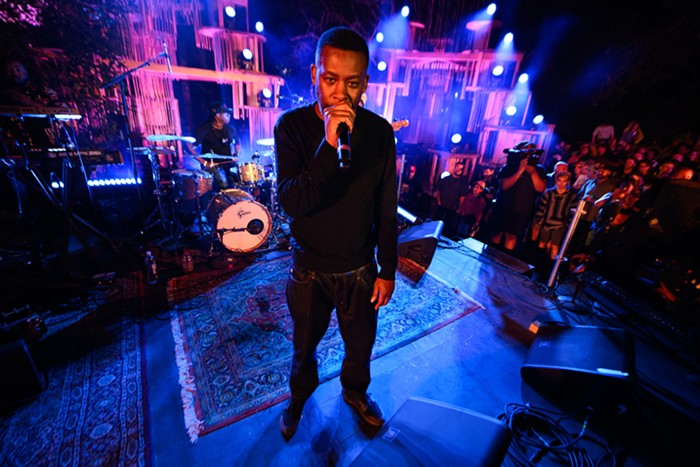IT'S DIFFICULT to surprise within the world of contemporary art, but Jamie Isenstein does. Confusion and contradiction pepper her pieces. Isenstein's work is performance art; it's sculpture; it's theater. It's all of these things, and yet it's not exactly these things. (At the Douglas F. Cooley Memorial Art Gallery, she will be doing a "silent performance on the harp.")
The title of Isenstein's show—Jamie Isenstein: Will Return—is the perfect preface to the artist's work. It's a playful contradiction: It alludes to her presence by including her name, and it excludes her by implying she's away, that she'll be back.
Isenstein frequently uses herself in her work by inhabiting her sculptures in a gallery. In a piece titled "Rug Rug Rug Rug Rug," we see Isenstein's arms and legs; she is on her stomach, splayed out, sandwiched between a floor rug and a variety of animal hides. Isenstein's limbs become sculptural objects. A contemporary to Isenstein might be Robert Gober—but only formally—in the way body parts appear, suddenly and surreally: an arm emerges from a wall; a hand appears at the end of a fire hose. The catch is that, in the case of Isenstein's art, the hand that appears is not a wax mold, it's her own hand.
Although fresh and surprising, Isenstein's art draws from very old forms of American entertainment: illusionists, vaudeville, and the circus. A previous installation at the Hammer Museum was titled This Way to the Egress—a reference to a P.T. Barnum anecdote. (This Way to the Egress was included in an episode of the Showtime series The L Word, further undermining one's solid sense of reality.)
Illusion and play are at the center of Isenstein's work, but so are graver questions. During a taped studio visit, available online, Isenstein traverses her studio holding a giant fern in front of her face. At another point she mimes a skeleton while she speaks. These segments feed into a major undercurrent of the artist's work: identity and mortality. In conjunction with the exhibition, the Cooley Gallery will release a monograph with contextual essays from curator Stephanie Snyder and Isenstein herself—who lives in Brooklyn, but is a Portland native. The texts are a welcome inclusion for work that is so visually and conceptually rich, but also elusive.













